MaryAnn Bernal's Blog, page 184
April 7, 2015
What did people in the Tudor period eat?
History Extra
As part of our 'History Extra explains' series, leading historians answer the burning questions you were too afraid to ask...
 A selection of 16th-century foods at Little Moreton Hall. © christopher jones / Alamy
A selection of 16th-century foods at Little Moreton Hall. © christopher jones / Alamy
What did people in the Tudor period eat?Rank, station, and even religious customs affected what you ate throughout the Tudor period.
Meat was forbidden on a Friday, when people ate fish instead. However, Henry VIII tended to be flexible, and often included certain meats, declaring them to be ‘fish’.
Certainly the Tudors ate a wider variety of meat than we do today, including swan, peacock, beaver, ox, venison, and wild boar. They did not eat raw vegetables or fruit, believing them to be harmful. Water, especially in cities like London, was polluted, and wealthier individuals drank wine. Everybody drank diluted ale and small beer.
Bread was an important staple of the Tudor diet; the most expensive was manchet bread, which was eaten only by the wealthy.
Lauren Mackay is the author of Inside the Tudor Court: Henry VIII and his Six Wives through the Life and Writings of the Spanish Ambassador, Eustace Chapuys (Amberley Publishing).
For more burning historical Q&As on the Tudors, ancient Rome, the First World War and ancient Egypt, click here.
As part of our 'History Extra explains' series, leading historians answer the burning questions you were too afraid to ask...
 A selection of 16th-century foods at Little Moreton Hall. © christopher jones / Alamy
A selection of 16th-century foods at Little Moreton Hall. © christopher jones / Alamy What did people in the Tudor period eat?Rank, station, and even religious customs affected what you ate throughout the Tudor period.
Meat was forbidden on a Friday, when people ate fish instead. However, Henry VIII tended to be flexible, and often included certain meats, declaring them to be ‘fish’.
Certainly the Tudors ate a wider variety of meat than we do today, including swan, peacock, beaver, ox, venison, and wild boar. They did not eat raw vegetables or fruit, believing them to be harmful. Water, especially in cities like London, was polluted, and wealthier individuals drank wine. Everybody drank diluted ale and small beer.
Bread was an important staple of the Tudor diet; the most expensive was manchet bread, which was eaten only by the wealthy.
Lauren Mackay is the author of Inside the Tudor Court: Henry VIII and his Six Wives through the Life and Writings of the Spanish Ambassador, Eustace Chapuys (Amberley Publishing).
For more burning historical Q&As on the Tudors, ancient Rome, the First World War and ancient Egypt, click here.
Published on April 07, 2015 07:36
Ghostly Faces and Invisible Verse Found in Medieval Text
Jeanna Bryner
Live Science
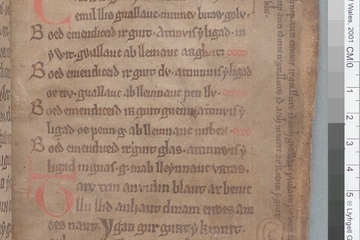 A page (49r) of "The Black Book of Carmarthen" showing the stylized drawing of a dog and text in the margins.
A page (49r) of "The Black Book of Carmarthen" showing the stylized drawing of a dog and text in the margins.
Credit: National Library of Wales
Ghostly faces and lines of verse previously invisible to the naked eye have been uncovered in the oldest surviving medieval manuscript written entirely in Welsh.
"The Black Book of Carmarthen," dating to 1250, contains texts from the ninth through 12th centuries, including some of the earliest references to Arthur and Merlin.
"It's easy to think we know all we can know about a manuscript like the 'Black Book,' but to see these ghosts from the past brought back to life in front of our eyes has been incredibly exciting," Myriah Williams, a doctoral student at the University of Cambridge, said in a statement. "The drawings and verse that we're in the process of recovering demonstrate the value of giving these books another look." [See Images of the Black Book and Ghostly Faces]
of Cambridge, said in a statement. "The drawings and verse that we're in the process of recovering demonstrate the value of giving these books another look." [See Images of the Black Book and Ghostly Faces]
In 1904, Sir John Williams, the founder of the National Library of Wales, bought the book, which measures 6.7 by 5 inches (17 by 12.5 centimeters). Only recently did Myriah Williams and Paul Russell, a professor at Cambridge's department of Anglo-Saxon, Norse and Celtic (ASNC), examine the pages of the book.
 [image error] The ghostly faces as visible under different parts of the spectrum in "The Black Book Carmarthen."
[image error] The ghostly faces as visible under different parts of the spectrum in "The Black Book Carmarthen."
Credit: National Library of WalesView full size image"The margins of manuscripts often contain medieval and early modern reactions to the text, and these can cast light on what our ancestors thought about what they were reading," Williams explained. "The 'Black Book' was particularly heavily annotated before the end of the 16th century."
Williams and Russell said they think a man named Jaspar Gryffyth, a 16th-century owner of the book who copied his name in Hebrew onto the book, likely erased such "reactions." These verses and doodles would've been added to the manuscript over centuries as it was passed from one owner to another. "He fits the time frame for the erasures, which we know would have been in the late 16th century, but we can only speculate that he might have been the one to take it upon himself to 'cleanse' the manuscript," Williams told Live Science in an email .
.
Using UV light and photo-editing software , Williams and Russell revealed glimpses of some of the erased doodles. For instance, page fol. 39v of the newly visible work includes ghostly faces and a line of text accompanying them, which date to the 14th or 15th century, Williams said. On the following page, fol. 40v, a full verse, possibly dating to the 13th century, came to light. "There is one more drawing so far that we are still working on," Williams said.
, Williams and Russell revealed glimpses of some of the erased doodles. For instance, page fol. 39v of the newly visible work includes ghostly faces and a line of text accompanying them, which date to the 14th or 15th century, Williams said. On the following page, fol. 40v, a full verse, possibly dating to the 13th century, came to light. "There is one more drawing so far that we are still working on," Williams said.
"What we have discovered may only be the tip of the iceberg in terms of what can be discovered as imaging techniques are enhanced," Russell said in the statement. "The manuscript is extremely valuable and incredibly important — yet there may still be so much we don't know about it." [10 Words in Medieval Voynich Manuscript Decoded]
Scientists think a single scribe collected and recorded the book's contents, ranging from religious verse to different types of poetry, over that individual's lifetime. The text in the 54-page book changes from large script written on alternating ruled lines of vellum to later pages with much smaller lettering and lines that are much closer together.
Williams, who studied the manuscript for her doctoral dissertation, has some favorite pages and verses, she said. Her favorite page, fol. 49r, holds various styles and layouts, along with an example of the scribe's penchant for writing on the book's margins. "It also contains a fantastic stylized image of a dog, possibly a greyhound," Williams said, adding that the book's scribe likely made the drawing. Two verses were also added, likely by this scribe, on the right margin of 49r.
of 49r.
"I am also fond of the central poem of this page, a short series of verses cursing a goose for pulling out the eye of Gwallawg, the figure after whom the poem has been named by scholars," Williams said.
In another entry, the legendary hero Arthur describes the virtues of his men in order to gain entrance to a court, the researchers noted. Two prophetic poems are attributed to the famed Merlin, as well, with the first poem of the book a conversation between him and Welsh poet Taliesin.
And in a text entitled "Englynion y Beddau" (or "Stanzas of the Graves"), a narrator claims to know where some 80 warriors are buried.
Williams said she hopes to continue to improve the reading of the newly revealed work on page fol. 40v and to learn more about the scribe's process of collecting works for the book. "Furthermore, I hope that I can use the information that we have gained from the margins and gaps to continue to develop a picture of the life of the 'Black Book' after the 'Black Book' scribe had completed his work," Williams said.
more about the scribe's process of collecting works for the book. "Furthermore, I hope that I can use the information that we have gained from the margins and gaps to continue to develop a picture of the life of the 'Black Book' after the 'Black Book' scribe had completed his work," Williams said.
Live Science
 A page (49r) of "The Black Book of Carmarthen" showing the stylized drawing of a dog and text in the margins.
A page (49r) of "The Black Book of Carmarthen" showing the stylized drawing of a dog and text in the margins.Credit: National Library of Wales
Ghostly faces and lines of verse previously invisible to the naked eye have been uncovered in the oldest surviving medieval manuscript written entirely in Welsh.
"The Black Book of Carmarthen," dating to 1250, contains texts from the ninth through 12th centuries, including some of the earliest references to Arthur and Merlin.
"It's easy to think we know all we can know about a manuscript like the 'Black Book,' but to see these ghosts from the past brought back to life in front of our eyes has been incredibly exciting," Myriah Williams, a doctoral student at the University
 of Cambridge, said in a statement. "The drawings and verse that we're in the process of recovering demonstrate the value of giving these books another look." [See Images of the Black Book and Ghostly Faces]
of Cambridge, said in a statement. "The drawings and verse that we're in the process of recovering demonstrate the value of giving these books another look." [See Images of the Black Book and Ghostly Faces] In 1904, Sir John Williams, the founder of the National Library of Wales, bought the book, which measures 6.7 by 5 inches (17 by 12.5 centimeters). Only recently did Myriah Williams and Paul Russell, a professor at Cambridge's department of Anglo-Saxon, Norse and Celtic (ASNC), examine the pages of the book.
 [image error] The ghostly faces as visible under different parts of the spectrum in "The Black Book Carmarthen."
[image error] The ghostly faces as visible under different parts of the spectrum in "The Black Book Carmarthen."Credit: National Library of WalesView full size image"The margins of manuscripts often contain medieval and early modern reactions to the text, and these can cast light on what our ancestors thought about what they were reading," Williams explained. "The 'Black Book' was particularly heavily annotated before the end of the 16th century."
Williams and Russell said they think a man named Jaspar Gryffyth, a 16th-century owner of the book who copied his name in Hebrew onto the book, likely erased such "reactions." These verses and doodles would've been added to the manuscript over centuries as it was passed from one owner to another. "He fits the time frame for the erasures, which we know would have been in the late 16th century, but we can only speculate that he might have been the one to take it upon himself to 'cleanse' the manuscript," Williams told Live Science in an email
 .
.Using UV light and photo-editing software
 , Williams and Russell revealed glimpses of some of the erased doodles. For instance, page fol. 39v of the newly visible work includes ghostly faces and a line of text accompanying them, which date to the 14th or 15th century, Williams said. On the following page, fol. 40v, a full verse, possibly dating to the 13th century, came to light. "There is one more drawing so far that we are still working on," Williams said.
, Williams and Russell revealed glimpses of some of the erased doodles. For instance, page fol. 39v of the newly visible work includes ghostly faces and a line of text accompanying them, which date to the 14th or 15th century, Williams said. On the following page, fol. 40v, a full verse, possibly dating to the 13th century, came to light. "There is one more drawing so far that we are still working on," Williams said."What we have discovered may only be the tip of the iceberg in terms of what can be discovered as imaging techniques are enhanced," Russell said in the statement. "The manuscript is extremely valuable and incredibly important — yet there may still be so much we don't know about it." [10 Words in Medieval Voynich Manuscript Decoded]
Scientists think a single scribe collected and recorded the book's contents, ranging from religious verse to different types of poetry, over that individual's lifetime. The text in the 54-page book changes from large script written on alternating ruled lines of vellum to later pages with much smaller lettering and lines that are much closer together.
Williams, who studied the manuscript for her doctoral dissertation, has some favorite pages and verses, she said. Her favorite page, fol. 49r, holds various styles and layouts, along with an example of the scribe's penchant for writing on the book's margins. "It also contains a fantastic stylized image of a dog, possibly a greyhound," Williams said, adding that the book's scribe likely made the drawing. Two verses were also added, likely by this scribe, on the right margin
 of 49r.
of 49r."I am also fond of the central poem of this page, a short series of verses cursing a goose for pulling out the eye of Gwallawg, the figure after whom the poem has been named by scholars," Williams said.
In another entry, the legendary hero Arthur describes the virtues of his men in order to gain entrance to a court, the researchers noted. Two prophetic poems are attributed to the famed Merlin, as well, with the first poem of the book a conversation between him and Welsh poet Taliesin.
And in a text entitled "Englynion y Beddau" (or "Stanzas of the Graves"), a narrator claims to know where some 80 warriors are buried.
Williams said she hopes to continue to improve the reading of the newly revealed work on page fol. 40v and to learn
 more about the scribe's process of collecting works for the book. "Furthermore, I hope that I can use the information that we have gained from the margins and gaps to continue to develop a picture of the life of the 'Black Book' after the 'Black Book' scribe had completed his work," Williams said.
more about the scribe's process of collecting works for the book. "Furthermore, I hope that I can use the information that we have gained from the margins and gaps to continue to develop a picture of the life of the 'Black Book' after the 'Black Book' scribe had completed his work," Williams said.
Published on April 07, 2015 07:25
History Trivia - Attila the Hun plunders Metz, France
April 7

451 Attila the Hun plundered Metz, France.
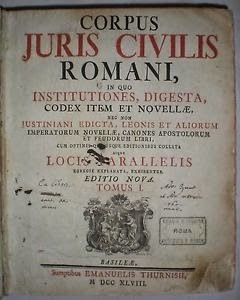
529 First draft of the Corpus Juris Civilis (a fundamental work in jurisprudence) was issued by Eastern Roman Emperor Justinian I.
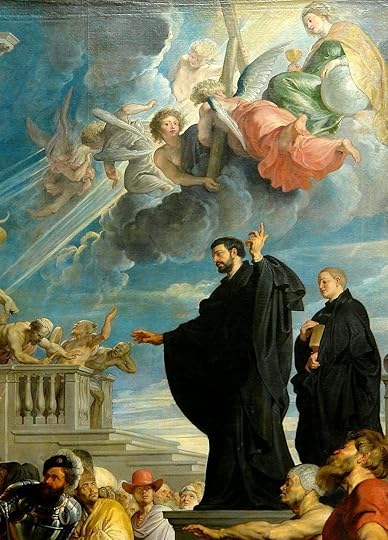
1506 St. Francis Xavier was born. A passionate missionary of Catholicism, Francis was instrumental in establishing Christianity in India and Japan. He was also one of the earliest members of the Society of Jesus.

451 Attila the Hun plundered Metz, France.

529 First draft of the Corpus Juris Civilis (a fundamental work in jurisprudence) was issued by Eastern Roman Emperor Justinian I.

1506 St. Francis Xavier was born. A passionate missionary of Catholicism, Francis was instrumental in establishing Christianity in India and Japan. He was also one of the earliest members of the Society of Jesus.
Published on April 07, 2015 01:30
April 6, 2015
History Trivia - Battle of Thapsus.- Julius Caesar victorious
April 6

46 BC – Julius Caesar defeated Caecilius Metellus Scipio and Marcus Porcius Cato in the battle of Thapsus.

774 Charles the Great (Charlemagne) affirmed Pippin’s promise of Quiercy, protecting the States of the Church.
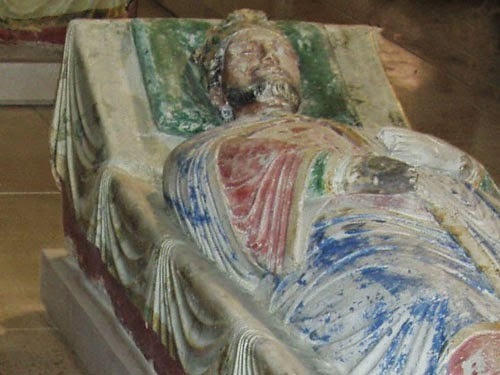
1199 England's King Richard I, the Lion-Hearted, died from an infection following the removal of an arrow from his shoulder.

46 BC – Julius Caesar defeated Caecilius Metellus Scipio and Marcus Porcius Cato in the battle of Thapsus.

774 Charles the Great (Charlemagne) affirmed Pippin’s promise of Quiercy, protecting the States of the Church.

1199 England's King Richard I, the Lion-Hearted, died from an infection following the removal of an arrow from his shoulder.
Published on April 06, 2015 01:00
April 5, 2015
Happy Easter
 Easter, also called Pasch or Resurrection Sunday, is a festival and holiday celebrating the resurrection of Jesus Christ from the dead, described in the New Testament as having occurred on the third day of his burial after his crucifixion by Romans at Calvary c. 30 AD. It is the culmination of the Passion of Christ, preceded by Lent, a forty-day period of fasting, prayer, and penance
Easter, also called Pasch or Resurrection Sunday, is a festival and holiday celebrating the resurrection of Jesus Christ from the dead, described in the New Testament as having occurred on the third day of his burial after his crucifixion by Romans at Calvary c. 30 AD. It is the culmination of the Passion of Christ, preceded by Lent, a forty-day period of fasting, prayer, and penanceWishing everyone a blessed Easter holiday.
I am grateful for your support and interest in my work.
God bless.
Mary Ann Bernal
Published on April 05, 2015 05:31
History Trivia - St. Patrick returns to Ireland
April 5
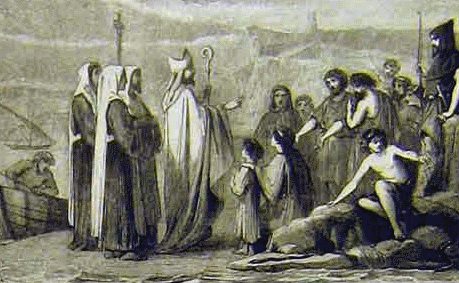
456 St. Patrick returned to Ireland as a missionary bishop.
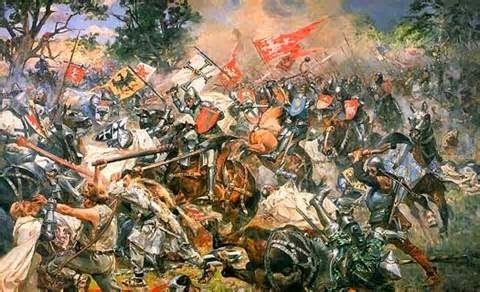
1242 Russian troops repelled an invasion by Teutonic knights.
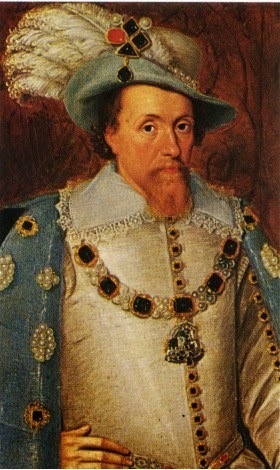
1603 New English king James I left Edinburgh for London.

456 St. Patrick returned to Ireland as a missionary bishop.

1242 Russian troops repelled an invasion by Teutonic knights.

1603 New English king James I left Edinburgh for London.
Published on April 05, 2015 01:30
April 4, 2015
#IndieBooksBeSeen: #IndieBooksBeSeen Thunderclap and Headtalker Campaign
#IndieBooksBeSeen: #IndieBooksBeSeen Thunderclap and Headtalker Campa...: We have our aims set high. Getting the word out to Readers, Reviewers, Bloggers, Authors and Small Publishers about #IndieBooksBeSeen ...
#IndieBooksBeSeen Thunderclap and Headtalker Campaign
 We have our aims set high. Getting the word out to Readers, Reviewers, Bloggers, Authors and Small Publishers about #IndieBooksBeSeen
We have our aims set high. Getting the word out to Readers, Reviewers, Bloggers, Authors and Small Publishers about #IndieBooksBeSeen
How can you help? Super easy! Just click on the links below, support one or both campaigns and then invite others to do the same. You can also share the post via Twitter, FB, your Blog, Mail, Pintrest and Google Plus - SHARE SHARE SHARE :-)
Making Indie Books Trendy!Attention Readers, Reviewers and Bloggers - and all lovers of great reads!
Supplement your reading with some Indie Books. Find your next favorite author and book via our
#IndieBooksBeSeen Blog
Get your copies via our #IndieBooksBeSeen Shop
Get updates on NEW Releases
Enter our Competitions and Giveaways
Join the #IndieBooksBeSeen Mailing List
Follow the FB Page
For Authors and Small Press
Author and Book Listing for FREE
Promote Competitions and Giveaways
Join and Contribute to Scavenger Hunts
Thanks you for supporting Indie Books and Indie Authors
#IndieBooksBeSeen Thunderclap and Headtalker Campaign
 We have our aims set high. Getting the word out to Readers, Reviewers, Bloggers, Authors and Small Publishers about #IndieBooksBeSeen
We have our aims set high. Getting the word out to Readers, Reviewers, Bloggers, Authors and Small Publishers about #IndieBooksBeSeenHow can you help? Super easy! Just click on the links below, support one or both campaigns and then invite others to do the same. You can also share the post via Twitter, FB, your Blog, Mail, Pintrest and Google Plus - SHARE SHARE SHARE :-)
Making Indie Books Trendy!Attention Readers, Reviewers and Bloggers - and all lovers of great reads!
Supplement your reading with some Indie Books. Find your next favorite author and book via our
#IndieBooksBeSeen Blog
Get your copies via our #IndieBooksBeSeen Shop
Get updates on NEW Releases
Enter our Competitions and Giveaways
Join the #IndieBooksBeSeen Mailing List
Follow the FB Page
For Authors and Small Press
Author and Book Listing for FREE
Promote Competitions and Giveaways
Join and Contribute to Scavenger Hunts
Thanks you for supporting Indie Books and Indie Authors
Published on April 04, 2015 08:26
Brooklyn and Bo Chronicles by Brenda Perlin: Scribbler Tales: Volume Four by Mary Ann Bernal
Brooklyn and Bo Chronicles by Brenda Perlin: Scribbler Tales: Volume Four by Mary Ann Bernal: Scribbler Tales: A Collection of Short Stories (Volume Four) "Scribbler Tales is a unique mix of genres in one anthology ric...

My Review
Scribbler Tales (Volume 4) by Mary Ann Bernal is rich with stories of greed, deceit and murder. I was instantly heaved into the suspenseful worlds the author has created. Leaving me speechless at times and always wowed. The roller coaster ride is a rocky one which left me wanting more. I so enjoyed the smart twists and the unexpected turns.
This book opens up with Abducted, a brilliantly told tale of messed up priorities and corruption. Insightful and intoxicating. While Cunning kept me on the edge, my curiosity was sparked with the paranormal aspects that took me by surprise.
In Enamored, biological age was of little importance as long as the mind remained young. This intriguing escape captivated my senses and drew me in. I loved this tale with its romantic undertone and mystery.
Then there is Reckless that is totally rapturing. There is a killer on the loose and the police are preparing for a standoff. Only if they can find their suspect! There is more to this story than meets the eye.
Lastly, Safeguard is an unexpected story. Sarah was lucky to be alive, yet nothing is as it seems.
I devoured this book in no time. Quick enough to move onto another Mary Ann Bernal novel. Would highly recommend!
Quote from Enamored ~
“Lady Margaret admired herself in the mirror, pleased with her appearance as her well-kept body hid her age well. And why not? She had the money and the wherewithal to remain ageless in a youth-oriented society. Jane Fonda and Cher were still in their prime, and one must not forget Helen Mirren being voted the sexiest woman alive a few years back. Biological age was of no importance, if one remained young in thought, word and deed.” Purchase

My Review
Scribbler Tales (Volume 4) by Mary Ann Bernal is rich with stories of greed, deceit and murder. I was instantly heaved into the suspenseful worlds the author has created. Leaving me speechless at times and always wowed. The roller coaster ride is a rocky one which left me wanting more. I so enjoyed the smart twists and the unexpected turns.
This book opens up with Abducted, a brilliantly told tale of messed up priorities and corruption. Insightful and intoxicating. While Cunning kept me on the edge, my curiosity was sparked with the paranormal aspects that took me by surprise.
In Enamored, biological age was of little importance as long as the mind remained young. This intriguing escape captivated my senses and drew me in. I loved this tale with its romantic undertone and mystery.
Then there is Reckless that is totally rapturing. There is a killer on the loose and the police are preparing for a standoff. Only if they can find their suspect! There is more to this story than meets the eye.
Lastly, Safeguard is an unexpected story. Sarah was lucky to be alive, yet nothing is as it seems.
I devoured this book in no time. Quick enough to move onto another Mary Ann Bernal novel. Would highly recommend!
Quote from Enamored ~
“Lady Margaret admired herself in the mirror, pleased with her appearance as her well-kept body hid her age well. And why not? She had the money and the wherewithal to remain ageless in a youth-oriented society. Jane Fonda and Cher were still in their prime, and one must not forget Helen Mirren being voted the sexiest woman alive a few years back. Biological age was of no importance, if one remained young in thought, word and deed.” Purchase
Published on April 04, 2015 08:16
History Trivia - Francis Drake was knighted
April 4
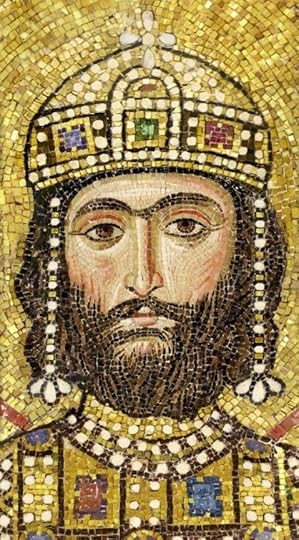
1081 Alexius Comnenus crowned emperor. Alexius seized the throne from Nicephorus III. During his reign, he would succeed in reviving the Eastern Roman Empire after half a century of ineffective rule.
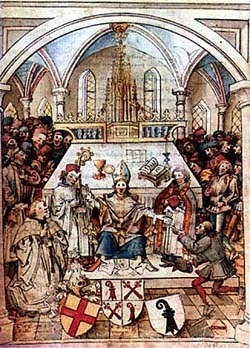
1460 University of Basle in Switzerland founded.
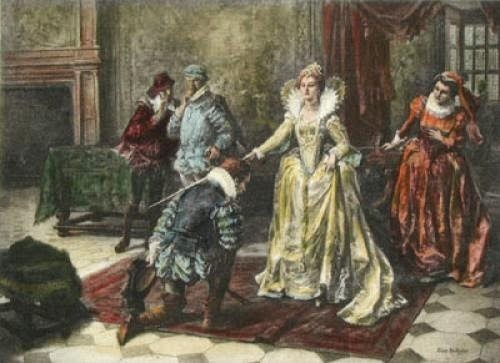
1581 Francis Drake was knighted for completing a circumnavigation of the world.

1081 Alexius Comnenus crowned emperor. Alexius seized the throne from Nicephorus III. During his reign, he would succeed in reviving the Eastern Roman Empire after half a century of ineffective rule.

1460 University of Basle in Switzerland founded.

1581 Francis Drake was knighted for completing a circumnavigation of the world.
Published on April 04, 2015 01:30
April 3, 2015
History Trivia - Edward the Confessor crowned King of England
April 3

1043 Edward the Confessor was crowned King of England. Elected by popular acclamation, Edward (known as "the Confessor" for his piety) had Norman sympathies and had supposedly named William the Conqueror his successor, before choosing Harold Godwinson on his death-bed.
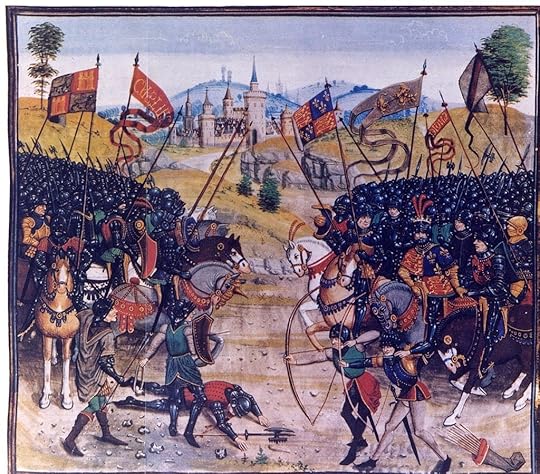
1367 John of Gaunt and Edward the Black Prince won the Battle of Najara, in Spain.
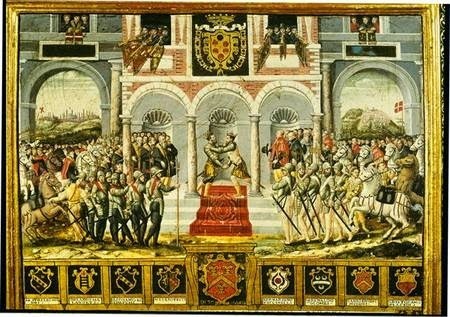
1559 Philip II of Spain and Henry II of France signed the peace of Cateau-Cambresis, ending a long series of wars between the Hapsburg and Valois dynasties.

1043 Edward the Confessor was crowned King of England. Elected by popular acclamation, Edward (known as "the Confessor" for his piety) had Norman sympathies and had supposedly named William the Conqueror his successor, before choosing Harold Godwinson on his death-bed.

1367 John of Gaunt and Edward the Black Prince won the Battle of Najara, in Spain.

1559 Philip II of Spain and Henry II of France signed the peace of Cateau-Cambresis, ending a long series of wars between the Hapsburg and Valois dynasties.
Published on April 03, 2015 01:30



